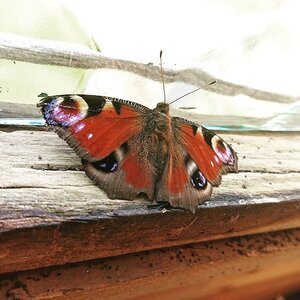Woodland management: What we do here at 9Trees
What is your favourite thing about a woodland? A chorus of spring birdsong or butterflies flitting around a secluded glade? Perhaps it is the autumn colours with the multitude of fungi clinging to old logs? Or taking a quiet walk between the snoozing trees on a crisp winter morning? All of these seem a far cry from a field of young trees; each little more than a twig, shielded from the world by their protective tubes.
Wildlife-rich habitats function much better as ecosystems, are healthier, and sequester more CO2. To achieve this takes many decades, but there are some management options we can use to help boost the biodiversity at our sites. With your help, we can give nature a hand to get established.
There are a few enhancements that we can make to our sites at the time of planting that will help to increase the resources for wildlife, other measures need a more long-term view, but all are valuable. We want to make the most of our opportunity, and welcome donations to this cause either as a one-off payment or increased annual subscription.
If the site is suitable, we can add some bird and animal boxes in the surroundings. Mature and ancient woodlands provide a lot of nesting and roosting opportunities for wildlife, from the holes left by falling boughs to cracked trunks and peeling bark. It takes a long time for these to occur naturally in planted woodlands, but bird, bat or even dormouse boxes can help to fill the gaps until this happens. In a similar vein, dead wood is an important feature of mature woodlands, providing resources for invertebrates and fungi which filter up through the food chain. They can take decades to occur naturally but adding wood piles and brash bundles to our new plantings can offer some of these benefits right from the start.
Together with our usual mix of native tree species, we can add further variety by adding some shrubs to the sites. Maybe they won’t sequester as much carbon, but plants such as Holly, Elder and Gorse can offer scrubby underlayers which increase the opportunities for wildlife to thrive, providing different layers of shelter and alternative food sources like berries. Away from our main planting sites we can improve nearby hedgerows, in-filling any gaps to help improve connectivity between our trees and other features in the wider area. This prevents fragmentation by providing safe corridors for wildlife to move around the landscape and may also supply additional food resources through use of species such as hawthorns and hazel.
A larger financial contribution can go towards for long-term woodland management, either for more expensive projects or saved up over time to cover works once our trees start to mature. Coppicing, for example, is a traditional management style with benefits for both people and wildlife. Cutting back growth in species such as willow and hazel promotes new growth and creates a diversity of vegetation layers and density within the woodland. We could select a few trees in each woodland for this management technique, which will be carried out every few years. Hedge-laying is another traditional management technique, where hedgerows are cut back and woven together to form a field boundary. As with coppicing, this promotes new growth and over time builds a thick, wildlife-rich hedge. By hedge-laying around our planting sites, we can add to the diversity of habitat and help to shelter and protect the micro-climate created by our growing trees.
We are passionate about what we do (learn more about us here), and get a lot of satisfaction from creating woodlands for future generations but we are very aware that 9Trees relies on a network of skilled professionals giving up their own time for the cause as volunteers. Your donation could become a to help us maximise their impact and allow us to tap into our existing team and expand our horizons, covering some of the hidden costs associated with the work we do. Ecological surveys ensure we can make the most of our opportunity and tailor the planting plan to the conditions, nearby habitats, and to the benefit of wildlife that may be in the area. Ongoing monitoring of our sites will not only ensure your trees are doing well but can monitor the changing habitat and increasing wildlife. Covering the costs of an assistant will help young people to train for a career in conservation.
With your help, we can maximise the value of your trees and do our bit to stem the tide of biodiversity loss. Perhaps we can also inspire you to try and boost the biodiversity in your own garden… Every little helps!
Matt Slaymaker
9Trees Ecology Advisor
15+ years’ experience in conservation, research and environmental consultancy.







